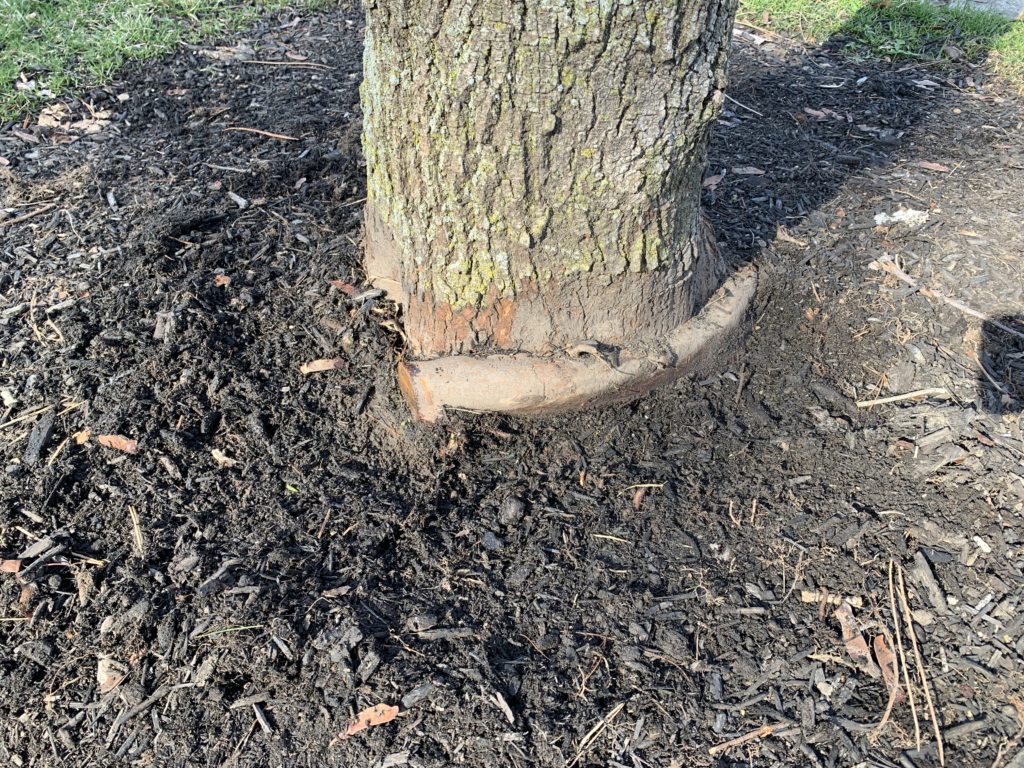Often times we forget how complex and sensitive a tree really is. Although it may seem easy to determine how healthy a tree is by examining the outside canopy and trunk, most issues stem from within the tree itself. One issue you might not notice by taking a glance at your tree is girdling roots. Girdling roots are an issue where the roots constrict the base of the tree causing it to suffocate. This suffocation can cut off vital nutrients that the tree needs in order to survive.

What Causes Girdling Roots?
This issue can have many causes. One we will discuss is unfortunate because for the most part it can be avoided; that is, improper planting practices. These practices include the following:
1. Failing to Remove Materials
Girdling roots can begin to form in the beginning stages of a tree’s life if it is not transplanted properly from a nursery. Be sure to remove the burlap and twine materials wrapped around the root ball to ensure a successful transplant. Failure to remove these materials from the tree upon planting puts added stress on the tree and promotes girdling roots.
2. Adding Excess Mulch
It is important also to not add additional mulch around the base of the tree. This additional mulch can prevent oxygen from getting into the soil, which is another cause of girdling roots. The mulch should only be to the point where the root flare begins to curve out and spread away from the base of the tree no more than two inches above grade. Think of the root flare as the feet of the tree. If these are covered up, the roots will not adapt naturally to their new environment.
How to Prevent Girdling Roots
The key to preventing girdling roots is to ensure that your tree adapts to its new environment well. You can do this by simply paying attention to the health of your tree. Ask yourself if anything looks off to you and if so, assess the situation to decide if you need to call an expert. Be sure to educate yourself on proper planting practices to ensure that your tree will not be affected by girdling roots. Depending on the circumstances, girdling roots can be corrected. Having said that, it is important to treat this issue early before it gets too out of control.
Do You Think Your Tree Has Girdling Roots?
If you suspect your tree may have girdling roots, we recommend having a Certified Arborist inspect your property. They will be able to determine why this is happening in order to prevent further issues. They will also be able to determine the best way to treat girdling roots based on the cause. Check out our Fact Sheet on Improving Root Health to learn more on this topic. This will inform you on treatment options that are available if your tree is suffering from girdling roots.


